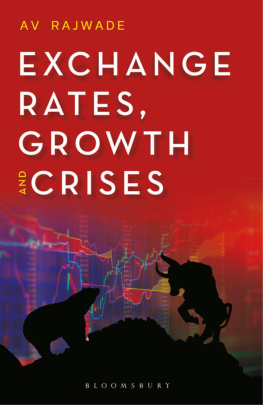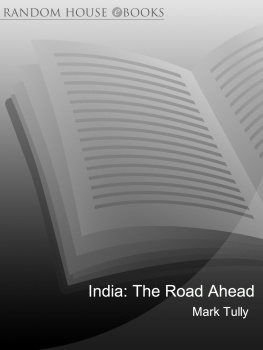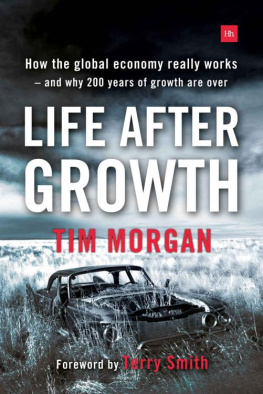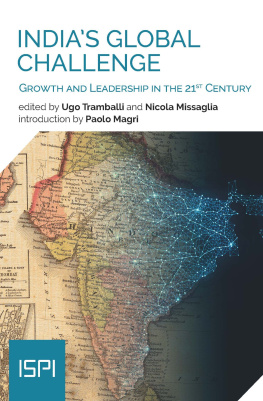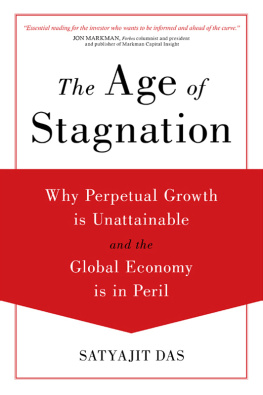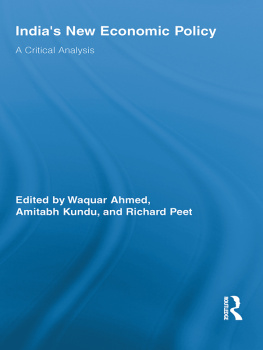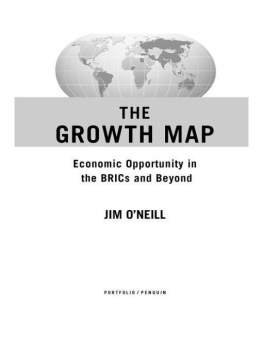Introduction
I n 2017, I was approached to co-author a book on Indias economic policy in the Narendra Modi years. Researching for that proposal convinced me that to understand the apparent crises todayagrarian, rural, investments, banking, manufacturing, stagnation in exports, jobs, informal sector, institutionsrequires grappling with the developments of the last ten years. Not just the Modi years.
What this backward glance reveals is that India was booming, cruising at 8.8 per cent plus economic growth before the start of the worst phase of the global financial crisis in September 2008.
Big business and, later, even mid-sized firms acquired iconic companies overseas. Demand and wages for construction labour shot up. Project books overflowed. Increments, salaries and hiring went up. If companies set up new offices, factories and businesses, then young Indians bought new houses, all funded by debt. Real estate prices soared.
The needs of cities grew. Many more house helps, watchmen, drivers and cooks were required, which rural India supplied. City demographics changed. Lifestyles changed. Consumption baskets changed. The middle class started travelling by air instead of rail. The protein intake among poor families improved.
It was as if Indias turn to claim the global spotlight had come. It was finally going to take off. With sustained high growth over an extended period, India could have approached what economists call a take-off, which means rapid and self-sustained GDP growth.
This momentum was called the India Growth Story.
It was this unfolding story that the global financial crisis disrupted ten years ago, in September 2008.
The immediate task of economic policy changed overnight. It now had to make sure that the India Growth Story was not destroyed completely and the impact of the crisis was minimized.
The Indian authorities managed this well, but a series of policy failures followed 2009 onwards, almost as soon as the economy rebounded after the initial impact. The ten years from 2008 to 2018the wasted decade as I call itsaw waning political will for reforms. The end result is that ten years have been lost but the pre-global financial crisis growth momentum has still not been regained.
Today, Indias GDP is growing at a world-beating rate, but little on the ground suggests that people are actually feeling better off. Theres no exuberance like before. Economic discontent and insecurity are on the rise, Dalits and farmers are restive, and traditionally land-owning classes are demanding quotas in government jobs. The middle class is palpably disaffected, the informal economy is struggling, and big businesses are no longer aggressively expanding. Balance sheets of the corporate sector and bad-loans-afflicted banks remain stressed. Debt is still not getting repaid. Finding a job is not easy, setting up a business is still difficult, savings earn little. To the average person, the GDP growth showing in the estimates put out by the official statistical apparatus seems out of sync with the day-to-day experience. The insufficiency of sustainable livelihoods threatens the demographic dividend. It may turn into a demographic nightmare.
The India Growth Story has devolved into Growth without a Story.
This book, organized into four chapters, reconstructs this slide.
The Shock (200809), the opening chapter of the book, revisits the seriousness of the global financial shock. In 2008, as one storied institution after another crashed on Wall Street under impact of the knock-on effect set off by the sub-prime crisis, shock and panic paralysed the global financial system. The US Federal Reserve and the US Treasury announced they were ready to print and pump as much money into the financial system as would be necessary to revive frozen credit markets and prevent the crisis from bringing down the US economy. But billions of dollars of bailouts and the unorthodox liquidity infusion programme, Quantitative Easing, could not prevent the crisis from turning into the worst global economic downturn since the Great Depression of the 1930s. Even ten years later, the world economy has still not recovered from it fully.
The authorities in India responded to the unfolding global crisis with alacrity, though. The crisis managers in the Reserve Bank of India (RBI) and the Manmohan Singh-led government administered timely emergency measures, averting a growth collapse and making sure no Indian bank or financial institution buckled under the impact of the domino effect spreading through the global financial system.
These initial monetary and fiscal responses were designed by economic experts, with little interference of politics, in contrast with the way economic policy was formulated in the decade that followed.
The global financial shock in September 2008 disrupted the pre-crisis momentum and slowed the economy for a year. The growth rate responded well to the emergency measures instituted and quickly rebounded by mid-2009.
The second chapter, A Recovery Destroyed (200912), discusses the destruction of this V-shaped recovery by developments essentially political in nature.
The Mumbai terror attacks in November 2008two months after the collapse of the iconic Wall Street firm Lehman Brothers that marked the beginning of the worst phase of the global crisisand the coronary bypass surgery Manmohan Singh underwent in January 2009 proved more significant determinants than the global crisis of how economic policy shaped up in the second term of the UPA government.
For changes in portfolios these unfortunate developments forced brought a politician locked in the 1970s dirigiste mindset, Pranab Mukherjee, to the finance ministrythe key portfolio for economic policy formulation. If the emergency measures were guided by economics, Mukherjee mostly acted in defiance of the advice he received from economists, including Manmohan Singh.
Driven largely by ideology and politics, he loosened the purse strings to step up public spending as if there were no tomorrow and ended up overstimulating the economy between 2009 and 2012.
This chapter discusses Mukherjees policies and attitude towards the RBI that complicated the fiscalmonetary policy mix with disastrous consequences for both inflation and growth rates, a matter that featured routinely in Governor D. Subbaraos deliberations with Dr Singh. But the prime minister did not seem to have used his authority to press his finance minister to give up the profligacy. Its coordination with New Delhi less smooth now, the RBI, which had handled the immediate aftermath of the global financial crisis well, muffed its monetary policy.
If a monetaryfiscal policy fumble was not enough, a body blow to policymaking soon followed in the shape of a Comptroller and Auditor General of India (CAG) report on the 2G spectrum allotments by the telecom ministry headed by A. Raja. Its releasefirst in bits and pieces leaked to the media and then through the official channel in Parliamentin November 2010 kicked up a political maelstrom.


